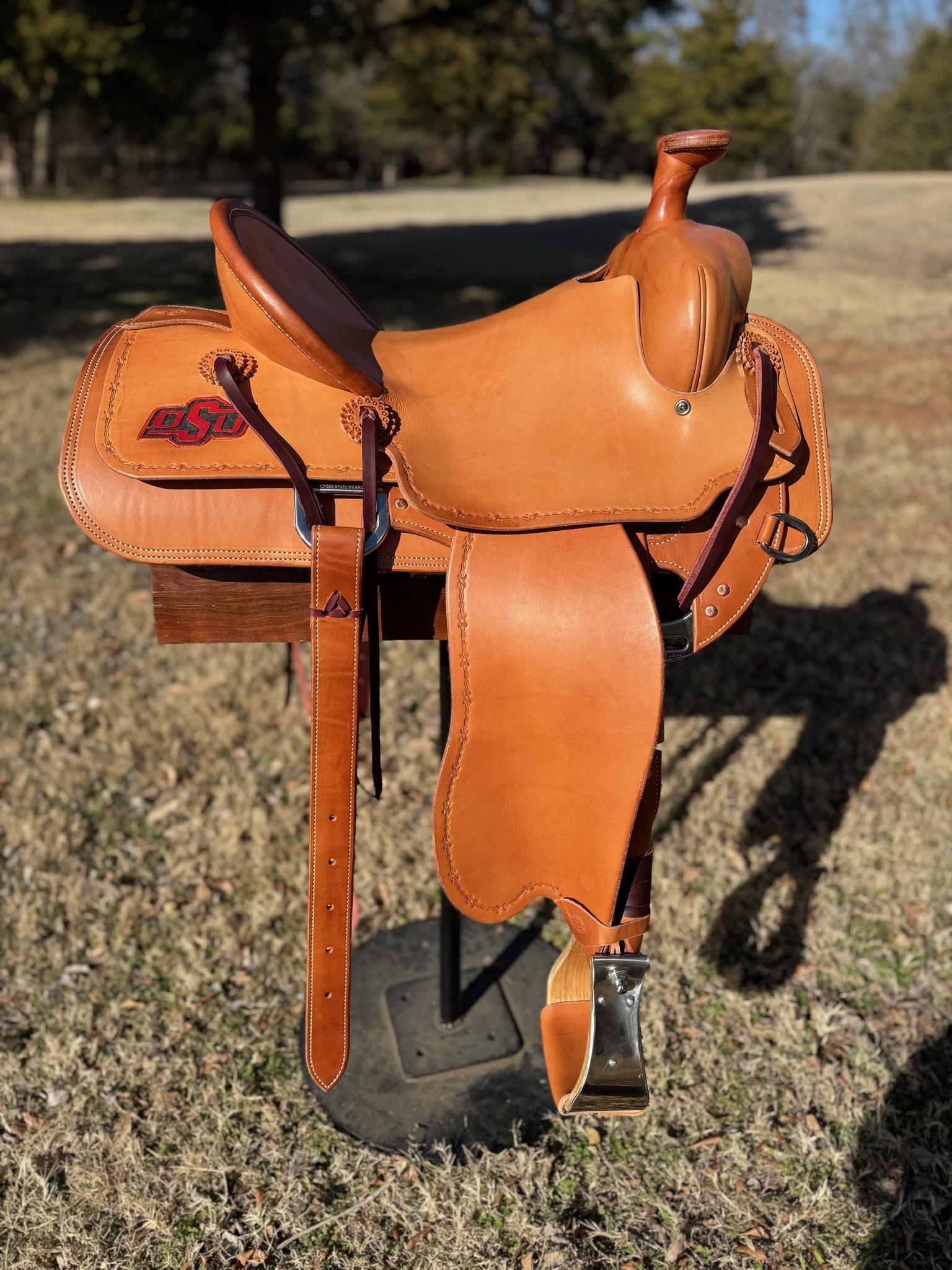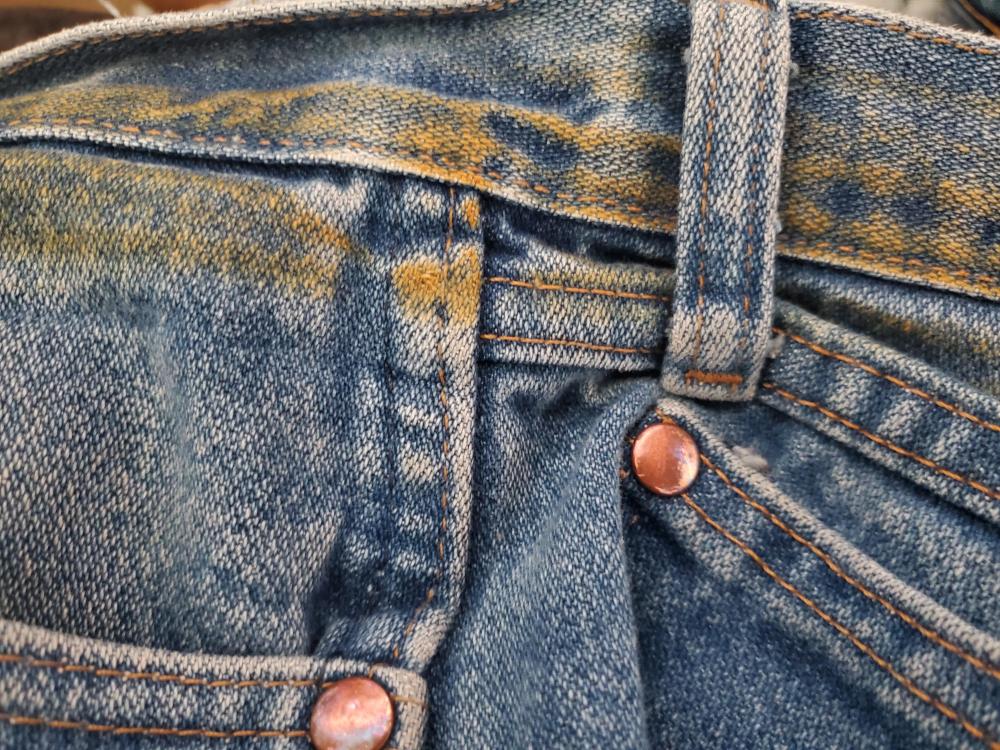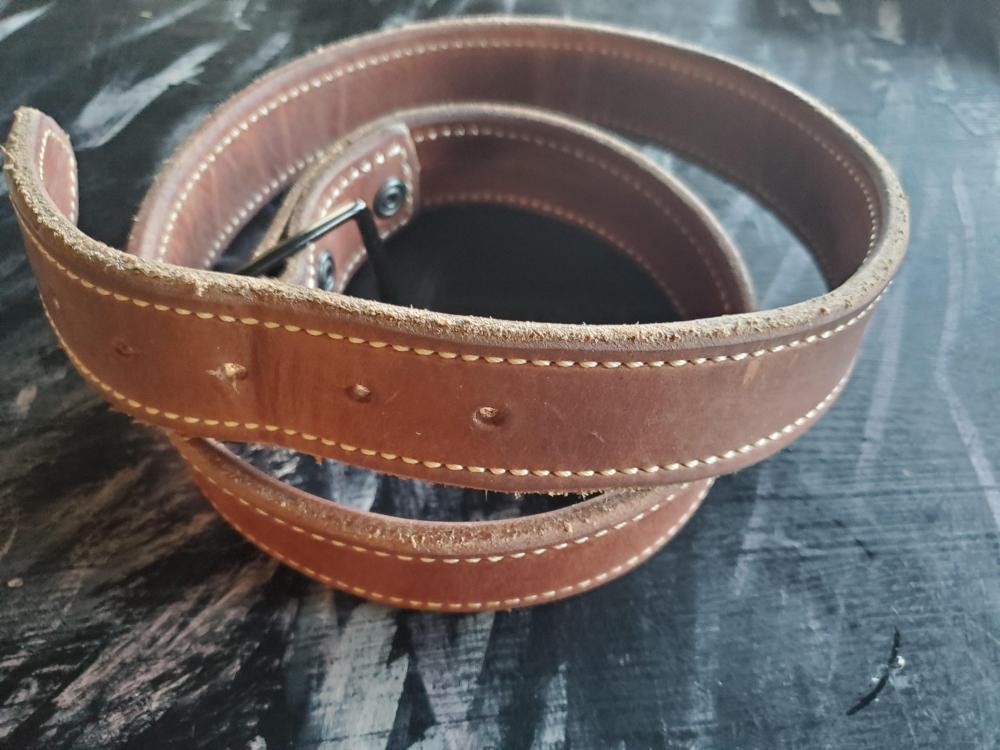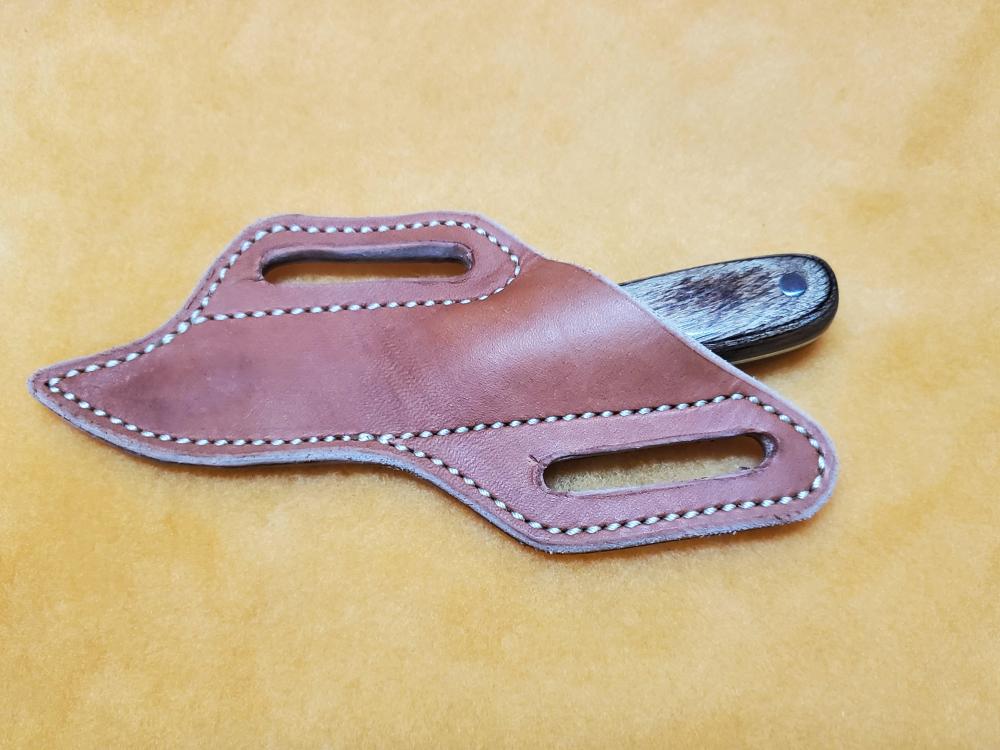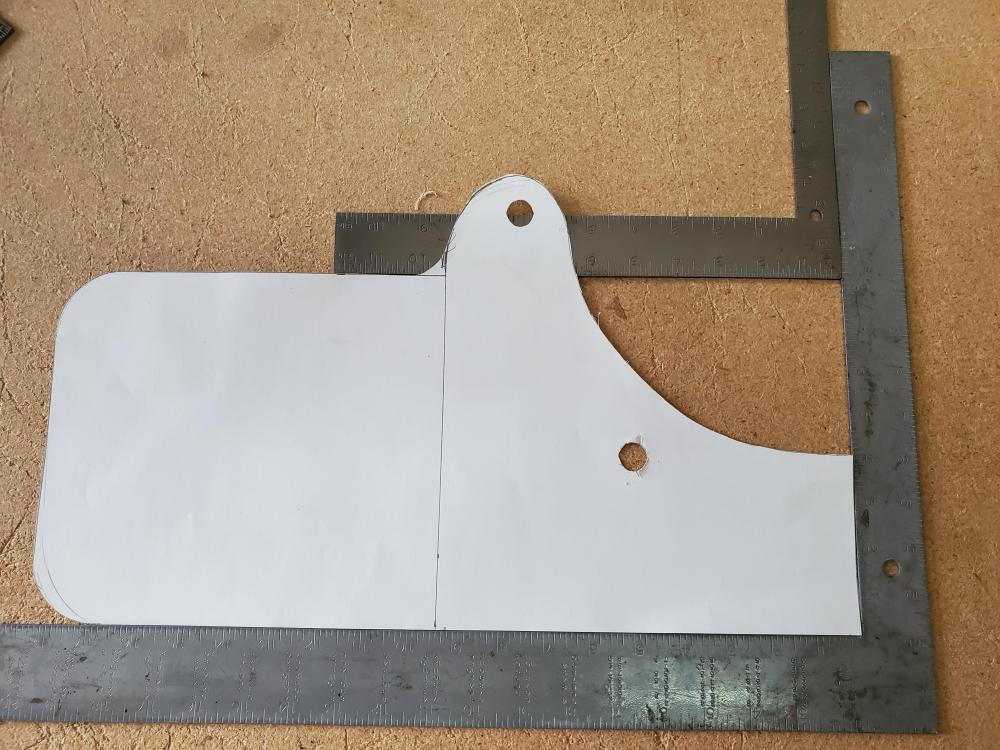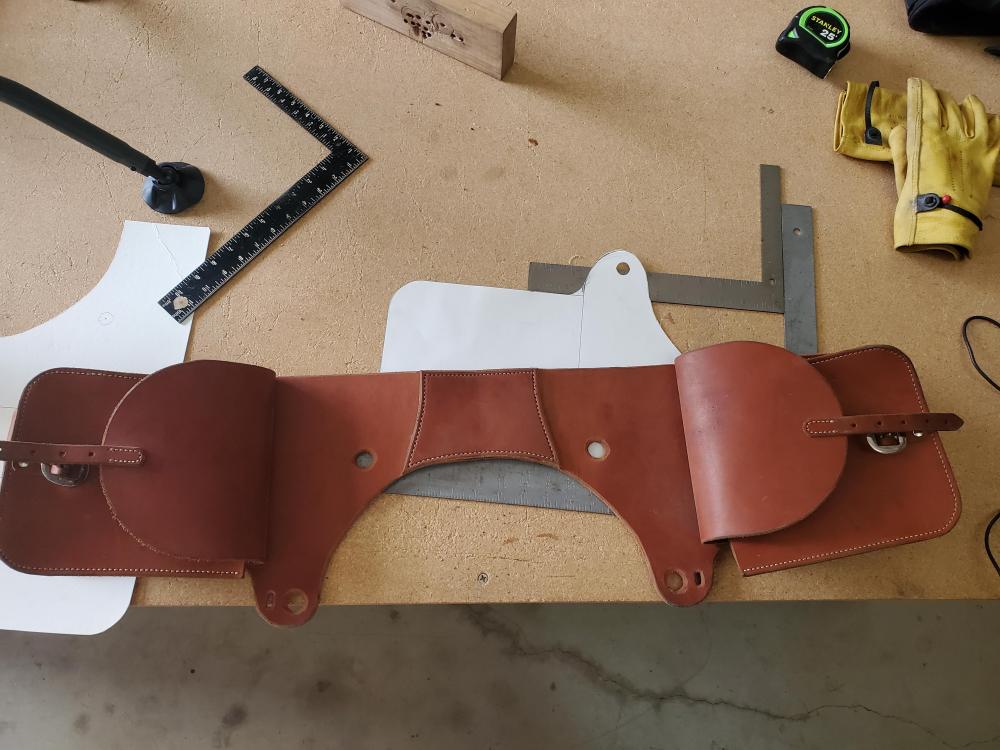-
Posts
485 -
Joined
-
Last visited
Content Type
Profiles
Forums
Events
Blogs
Gallery
Everything posted by rktaylor
-
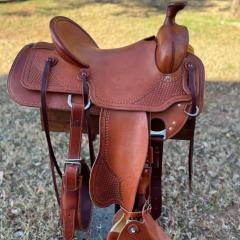
Dye Rubbing Off
rktaylor replied to rktaylor's topic in Dyes, Antiques, Stains, Glues, Waxes, Finishes and Conditioners.
I thought I had it buffed. No dye was coming off at that time. I will give the neat-lac a try. Thanks, Randy -
I made a really nice lined belt for myself. I dyed the liner with Sheridan brown Pro Dye, oiled it with 100% neatsfoot, then sealed it with 50/50 resoline/water. The dye is rubbing off on my jeans. Should I add another coat of resoline or maybe some neat lac? What's the best way to prevent this from happening? Thanks, Randy
-

Opinions on Herman Oak Old world harness leather for belt?
rktaylor replied to RichardJ's topic in Leatherwork Conversation
This belt is made with HO old world harness leather from Weaver. It's a little thicker than I intended, but it could double as a tow strap. I haven't written it a lot, but I like it. Randy -
Ron, Wow. This was sure a long time ago. I ended up not building that saddle, but have built a few others. They are dominated by Will James, modified associations, and Buster Welch trees. I have recently used Timberline, Swanke, and Double L. They all seem to have their place. I really like Swanke, but they were 9 months out the last time I checked. I'm looking forward to seeing your saddle. Randy
-
Thanks. I'm looking for an easy, and effective, method for long straight bevels like belts. I watched a Don Gonzales video where he used a push beveler. Now I'm thinking the swivel knife beveler might be a better option for me. Randy
-
Sorry to hear about the gift card. That's unfortunate. I have been thinking about a push beveler, but now you have me thinking about the swivel knife. Have you used both? I'm also making a longer list of tools that I think I need. Randy
-
I am currently focusing on these as well (among others). My background areas always seem to grow. Your work looks great. Especially the decorative cuts as noted. Randy
-

Seeking Input on Sheath Design
rktaylor replied to rktaylor's topic in Gun Holsters, Rifle Slings and Knife Sheathes
Thanks for the suggestions. This sheath has a welt. I have tried wet forming, but I think I need to cover more of the handle. Wet forming is a skill, like many others, that I need to work on more. Randy -

Seeking Input on Sheath Design
rktaylor replied to rktaylor's topic in Gun Holsters, Rifle Slings and Knife Sheathes
Thanks for the input. I've been focused on other projects recently, but will return to this soon. I can report that v2.0 and v3.0 (not shown) lost their retention after wearing for a day. I have plans for another version, but it'll be a couple weeks before I work on it. Randy -

Seeking Input on Sheath Design
rktaylor replied to rktaylor's topic in Gun Holsters, Rifle Slings and Knife Sheathes
Thanks for the feedback. Here's v2.0. Critiques are always welcome, but I will note that I'm making these from scrap leather until I settle on a pattern. Both versions have welts, but the second one covers the tip better. I like this longer version, but there's still room for improvement. I think the stitch line along the top of the knife is too close near the handle and too far away near the blade. There's still time for input before the final build. Randy -

Seeking Input on Sheath Design
rktaylor replied to rktaylor's topic in Gun Holsters, Rifle Slings and Knife Sheathes
DieselTech, Thanks for the compliment. He calls this a straight trapper. I've used it on anything from leather work to field dressing deer. I also think it could be longer and have some thoughts for other changes. I thought I would get input before I made the next one. Randy -
I just looked at a few saddles and most of mine are tied with 1/4 to 5/16 wide lace with about a 3/16 hole. The lace is either 3-4 oz latigo or kangaroo that is really thin. Randy
-
I would split that to 3-4 oz and use a 5/16" hole. Randy
-
Thanks. I appreciate the compliment. The hole size depends on lace thickness and width. 1/4" seems small to me. Depending on your lacing pattern, two holes could have three pieces of lace going through. Randy
-
I use 346 on top and 277 on bottom. RT
-
My good buddies would drop off a 30 pack and call it good. I have trouble pricing items, so I'm not the best source. You can price a set of billets online or at the local farm store and realize there is no way you can make them for that. You'll either give away your labor or materials or maybe some of both. However you'll make a higher quality product. Thus, I try to price items 40-50% above production items and realize, it's not going to be my bread and butter. Randy
-
I have used everything from 6-7 ounce to 9-10 ounce latigo. It depends on the expected use. You could just double the saddle skirting if that's what you have on hand. 1.75" is pretty standard width. Randy
-
I use fairly stiff veg tan lined with latigo. It shouldn't need reinforcement at the holes. Randy
-

Help identifying a saddle stamp
rktaylor replied to stavey's topic in Saddle Identification, Restoration & Repair
I agree with Bruce. I don't think Terry is a member here, but he shouldn't be hard to find. Randy -
Dwight, I'm a little late to the game, but this is my pattern. The holes match the strings on saddles I build. That curve should fit a lot of saddles. You can leave the front ear off if you want. I use it to attach the bags. The saddle bags in the photo are really heavy leather. They were my first attempt. Best, Randy
-

Saddle rigging plate (2 rivets enough?)
rktaylor replied to andrewmcal's topic in Saddle Construction
Do you have a photo? -
I have not used Tokonole, but the comments on Weaver's web page are positive. I will order some. Weaver only has brown at this time. I just received some tragacanth and Edge Kote that I need to test. Thanks for the tip, Randy
- 13 replies
-
- burnishing
- edge
-
(and 1 more)
Tagged with:
-
Here's an option: http://www.pikespeaksaddlery.com/id293.htm Randy


